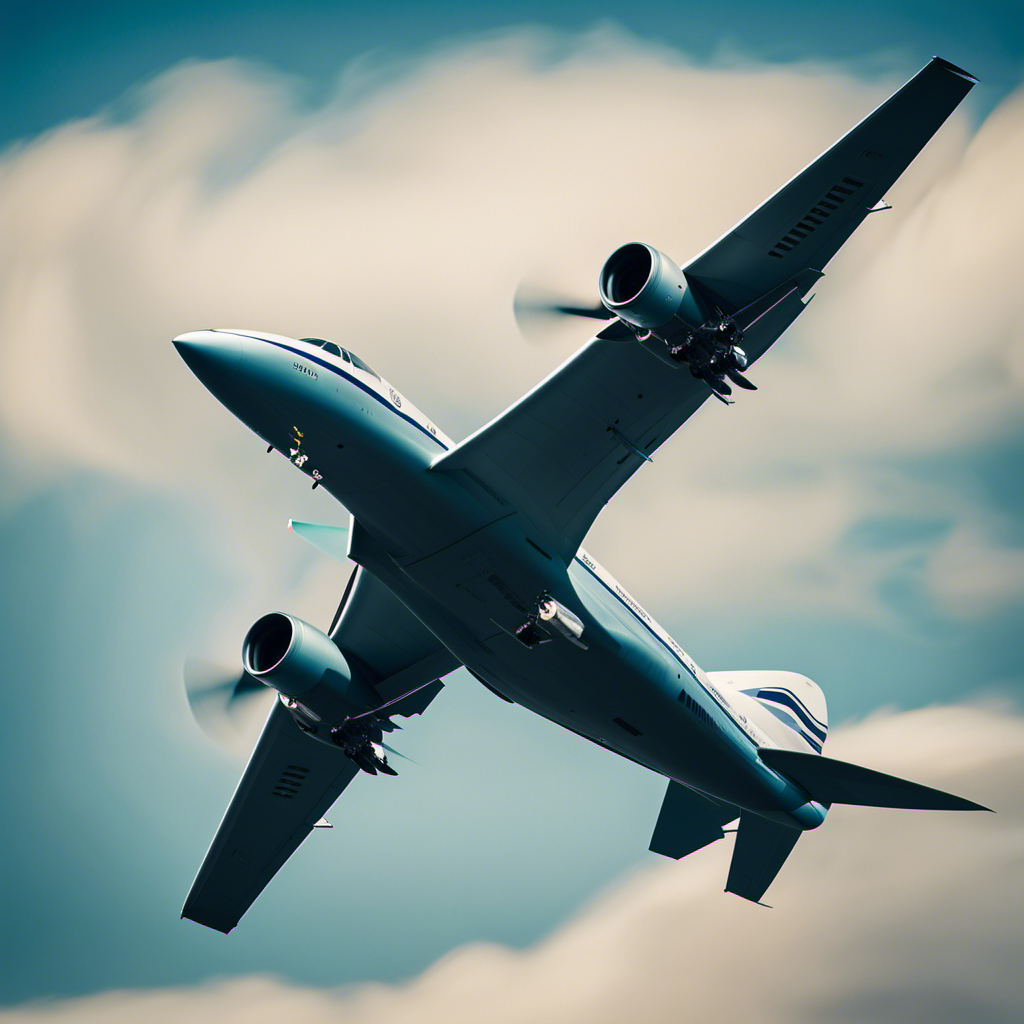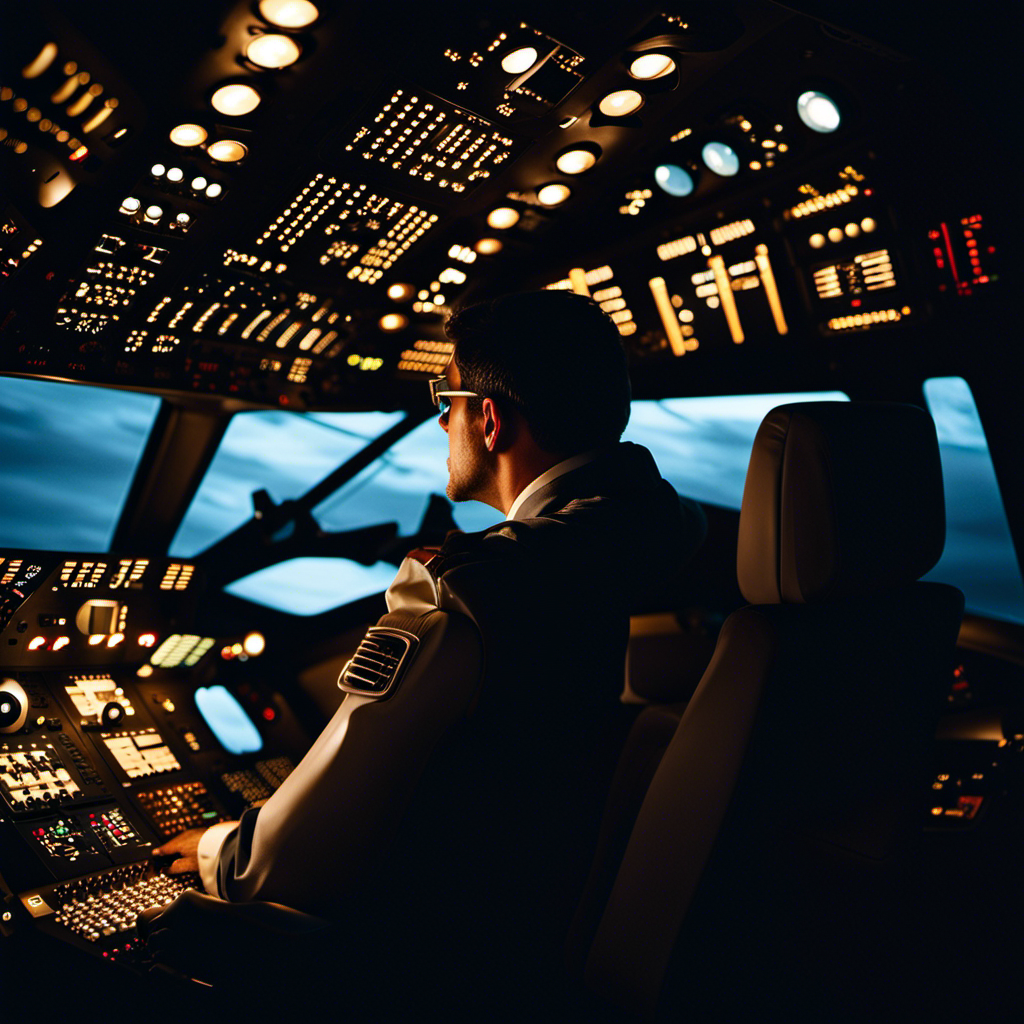I have always been captivated by the idea of soaring through the sky, feeling the rush of adrenaline as I navigate through the clouds.
Did you know that the average cost of going gliding can range from $100 to $300 per flight?
In this article, we’ll explore the various expenses involved in this thrilling sport, including membership fees, equipment costs, training expenses, and more.
So, if you’ve ever wondered how much it truly costs to go gliding, keep reading to find out.
Key Takeaways
- Gliding requires insurance coverage for liability and personal accident.
- Maintenance and repair costs should be budgeted for optimal gliding performance.
- Gliding competitions and events offer opportunities to showcase skills and compete.
- Joining a gliding club and taking lessons can save money and provide necessary skills.
Types of Gliding Experiences
There’s a variety of gliding experiences available for different skill levels. Whether you’re a beginner or an experienced glider, there are different techniques to try out.
Some common gliding techniques include ridge soaring, where you use the wind that blows against a hill to stay aloft, and thermal soaring, where you use the rising columns of warm air to gain altitude.
When it comes to popular gliding destinations, there are many options to choose from. Some of the most renowned locations include the Swiss Alps, where you can enjoy breathtaking views while gliding through the mountains, and the Great Plains in the United States, known for their vast open spaces and ideal conditions for gliding.
Now, let’s delve into the details of membership and club fees.
Membership and Club Fees
To become a member and access the club facilities, you’ll need to pay a membership fee and club fees. The cost of these fees can vary depending on the gliding club you choose.
Most clubs offer different membership options to suit your needs and budget. These options can range from annual memberships to monthly or even daily passes. By becoming a member, you gain access to a range of club benefits, such as discounted rates for glider rentals, priority access to launch slots, and access to club events and social gatherings.
Being part of a gliding club not only gives you the opportunity to fly, but also allows you to be part of a community of like-minded individuals who share your passion for gliding.
Transitioning into the next section, let’s discuss the equipment and gear costs involved in gliding.
Equipment and Gear Costs
You’ll need to invest in various equipment and gear for gliding, such as helmets, flight suits, and safety harnesses. These items are essential for your safety and comfort during gliding sessions.
When it comes to equipment and gear costs, there are a few options available to you:
-
Equipment rental: If you’re just starting out or don’t plan on gliding frequently, renting equipment may be a more cost-effective option. Many gliding clubs offer equipment rental services for a reasonable fee.
-
Second-hand gear: Another option is to purchase second-hand equipment. This can be a great way to save money, as long as you ensure the gear is in good condition and meets safety standards.
Transitioning into the next section about instruction and training costs, it’s important to note that once you have the necessary equipment, you’ll also need proper instruction and training to safely navigate the skies.
Instruction and Training Costs
When starting your gliding journey, it’s important to consider the expenses associated with instruction and training. Instruction fees and training expenses can vary depending on the location and the type of training you choose.
Most gliding clubs offer instruction packages that include a certain number of lessons and flight time. These packages can range from a few hundred to a few thousand dollars. Additionally, you may need to pay for ground school materials, flight manuals, and any necessary certifications or exams.
It’s also important to factor in the cost of transportation to and from the gliding site, as well as accommodation if necessary. By understanding the potential expenses of instruction and training, you can better plan your budget and make informed decisions about your gliding journey.
Moving on to additional expenses…
Additional Expenses
Now let’s discuss the other expenses you may encounter during your gliding journey. While instruction and training costs are a significant part of the overall expenses, there are additional costs and hidden expenses that you should be aware of. Here are a few to consider:
-
Equipment: Gliding requires specialized equipment such as a glider, parachute, and instruments. These can be rented or purchased, but they can add up to a considerable expense.
-
Maintenance: Gliders require regular maintenance and inspections to ensure their safety and airworthiness. This includes routine checks, repairs, and replacements, which can incur additional costs.
-
Insurance: It’s essential to have insurance coverage for your glider, as accidents and damages can happen. The cost of insurance will depend on factors such as your location, experience level, and value of the glider.
These additional costs and hidden expenses can significantly impact your overall budget for gliding. However, they are necessary to ensure a safe and enjoyable experience.
Now, let’s explore the next section about special packages and discounts.
Special Packages and Discounts
There are various special packages and discounts available that can help make gliding more affordable and accessible. Gliding clubs often offer special offers for beginners or those who want to try gliding for the first time. These packages typically include a certain number of glider flights, ground instruction, and sometimes even a membership discount.
Group discounts are also commonly offered, where a group of friends or family members can enjoy discounted rates when they book together. These special offers and group discounts can significantly reduce the cost of gliding and make it more affordable for everyone. However, it’s important to check with the gliding club or center for the specific details and availability of these packages and discounts.
Moving on to insurance and liability costs, it’s crucial to understand the potential expenses and coverage options involved.
Insurance and Liability Costs
Liability Insurance and Personal Accident Insurance are two important types of coverage that should be considered when discussing insurance and liability costs.
Liability insurance provides protection in the event that you cause damage or injury to someone else or their property.
Personal accident insurance offers coverage for medical expenses and income protection in case of an accident.
Both types of insurance can help mitigate financial risks and provide peace of mind in case of unforeseen events.
Liability Insurance
Gliding clubs typically require members to have liability insurance coverage. This is to protect both the club and the individual in the event of a gliding accident. Liability coverage ensures that if any damage or injury occurs during a flight, there is financial protection in place.
Here are some key points to consider about liability insurance for gliding:
- Gliding clubs often have specific requirements for the amount of liability coverage needed.
- Liability insurance can vary in cost depending on factors such as the pilot’s experience and the value of the glider.
- It is important to review the policy details to understand what is covered and any limitations or exclusions.
- Some gliding clubs may offer liability insurance as part of their membership package.
- It is advisable to regularly review and update your liability coverage to ensure adequate protection.
When it comes to personal accident insurance, it is important to consider additional coverage beyond liability insurance.
Personal Accident Insurance
When considering personal accident insurance, it’s important to understand the additional coverage it provides beyond liability insurance. Personal accident coverage is designed to protect you in the event of an accident that results in bodily injury or death. This type of insurance can provide financial support for medical expenses, loss of income, and even funeral costs.
It’s crucial to have this coverage because liability insurance typically only covers damage to others and their property. Personal accident insurance ensures that you are protected financially if you are injured in an accident, regardless of who is at fault. Insurance premiums for personal accident coverage can vary depending on factors such as age, occupation, and desired coverage limits.
With this understanding of personal accident insurance, let’s now explore the next aspect of the cost equation: maintenance and repair costs.
Maintenance and Repair Costs
To keep your glider in top condition, you’ll need to budget for regular maintenance and repair costs. Taking care of your glider is essential to ensure safe and enjoyable flights. Here are some key points to consider regarding maintenance costs and repair expenses:
- Regular inspections: Scheduling routine inspections is crucial to identify any potential issues and address them promptly.
- Component replacements: Over time, certain parts of the glider may wear out or become damaged, requiring replacement to maintain optimal performance.
- Repair services: In case of any accidents or damage, professional repair services may be necessary to restore the glider to its original condition.
- Equipment upgrades: As technology advances, you may choose to upgrade certain components or equipment to enhance your gliding experience.
By accounting for these maintenance costs and repair expenses, you can ensure that your glider remains in excellent shape.
Now, let’s explore the exciting world of gliding competitions and events.
Gliding Competitions and Events
Competitions and events in gliding offer a thrilling opportunity to showcase your skills and compete against other experienced pilots. Gliding events provide a platform for pilots to demonstrate their expertise and push their limits. These events often take place in various locations, allowing participants to explore new terrains and experience diverse flying conditions.
Competitive gliding involves flying tasks such as distance racing, speed contests, or accuracy landings. It requires precision, strategy, and a deep understanding of weather patterns. Participating in gliding competitions not only offers a chance to test your abilities but also allows you to network with fellow gliders and learn from their experiences.
Now, let’s discuss some tips for saving money on gliding without compromising the quality of your flying experience.
Tips for Saving Money on Gliding
Joining a gliding club can be a great way to save money on your gliding adventures. Not only do you gain access to club facilities and equipment, but you also become part of a community of gliding enthusiasts who can offer tips and support.
Another way to save money is by taking advantage of off-peak rates. These rates are often lower than peak rates and can be found during less popular times of the day or week.
Joining a Gliding Club
If you’re interested in becoming a member at a gliding club, the cost is typically a yearly membership fee. Being a member of a gliding club can offer numerous benefits, such as access to gliders, experienced instructors, and a supportive community of fellow gliders.
Here are three important things to consider when joining a gliding club:
-
Gliding Lessons: Most gliding clubs offer lessons for beginners, which are essential for acquiring the necessary skills and knowledge to glide safely. These lessons are usually available at a discounted rate for club members, making it a cost-effective way to learn.
-
Gliding License: To fly solo, you’ll need to obtain a gliding license. Many gliding clubs provide training programs that help members achieve their licenses. By joining a club, you’ll have the opportunity to work towards obtaining your license with expert guidance.
-
Networking Opportunities: Being part of a gliding club allows you to connect with experienced gliders who can share valuable insights and tips. This networking can enhance your gliding experience and help you progress faster.
Taking Advantage of Off-Peak Rates
When you’re a member of a gliding club, you can save money by taking advantage of off-peak rates for your flights. Off-peak advantages include lower prices and increased availability of flight slots.
By flying during less popular times, such as weekdays or early mornings, you can enjoy significant cost savings. In addition, gliding clubs often offer discounted rates for members who fly during these off-peak periods. This can be a great cost saving strategy for glider pilots who want to maximize their flying time without breaking the bank.
It’s important to check with your gliding club to understand their specific off-peak policies and rates. By planning your flights strategically and making use of off-peak rates, you can make your gliding hobby more affordable and enjoyable.
Frequently Asked Questions
Are there any age restrictions for gliding?
Age limits and weight restrictions are common in gliding. These restrictions vary depending on the gliding club or organization. It is important to check with them beforehand to ensure you meet the requirements.
Can I bring my own equipment and gear for gliding?
Yes, you can bring your own equipment for gliding, but most gliding centers offer rentals for gliding gear. It’s a good idea to check with the specific gliding center for any restrictions or requirements.
Is gliding suitable for people with disabilities?
Gliding is surprisingly accessible and inclusive for people with disabilities. Specialized equipment and trained instructors make it possible for individuals of varying abilities to experience the freedom and thrill of gliding. Gliding clubs strive to create a welcoming environment for everyone.
Do I need any prior experience or training to go gliding?
No prior experience or training is needed to go gliding. The instructors will provide all the necessary guidance and instruction to ensure a safe and enjoyable experience for beginners.
Are there any health requirements or medical restrictions for gliding?
There may be health requirements or medical restrictions for gliding. It is important to check with the gliding club or instructor beforehand to ensure that you meet the necessary criteria for participating in this activity.
Conclusion
After delving into the costs of gliding, it’s safe to say that pursuing this exhilarating hobby won’t break the bank. From the initial fees to the ongoing expenses, gliding can be quite affordable. Who would’ve thought that soaring through the skies could be so budget-friendly?
So, don’t let the misconception of sky-high costs deter you. With some careful planning and budgeting, you can glide your way into an affordable adventure that will leave you feeling like you’re on cloud nine.
With a heart that soars as high as the skies, Aria, affectionately known as “Skylark,” is the driving force behind Soaring Skyways. Her journey into the gliding world began as a young dreamer gazing up at the soaring birds, yearning to experience the weightlessness and freedom they embodied. With years of experience both in the cockpit and behind the scenes, Aria’s commitment to the gliding community is unwavering.










